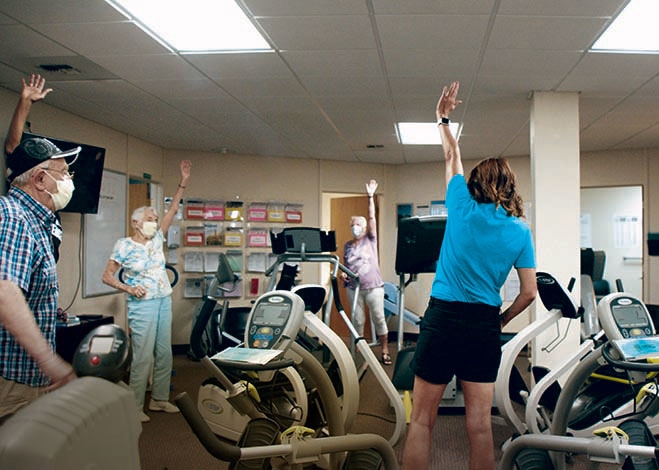Peripheral Artery Disease: Understanding This Blood Vessel Disorder
Dec 5, 2023

Peripheral artery disease occurs when blood vessels coming from the heart to the rest of the body are constricted and may signal more ominous health conditions.
You’ve probably heard the term “cardiovascular disease” used to refer to a variety of heart-related conditions. Less well-known is that it also covers diseases of the blood vessels, or vascular system, which can also have dire outcomes if not identified and treated.
One of these is peripheral vascular disease, or PVD, the constriction of blood vessels connecting the heart to the arms, legs, hands and feet. PVD can occur in the arteries or the veins. When PVD occurs in the arteries, which supply oxygen-rich blood from the heart to the rest of the body, it is known as peripheral artery disease, or PAD. When the constriction happens in the veins, which return oxygen-depleted blood to the heart, the condition is called peripheral venous disease.
Read More: Peripheral Venous Disease Symptoms, Diagnosis and Treatment
While peripheral artery disease is treatable, with better outcomes when it’s identified early, it can lead to amputation of limbs in particularly severe cases. The restricted blood flow is also linked to heart attacks and strokes. Following your doctor’s advice is vital to dealing with these disorders, and adopting a healthier lifestyle can improve your health outlook significantly.
Risk factors for peripheral artery disease include smoking, high blood pressure, diabetes and atherosclerosis, a disease marked by plaque buildup in the arteries.
Symptoms of PAD
About 1 in 4 people with peripheral artery disease report common symptoms such as pain in the legs, while more than half experience unusual symptoms, according to the National Heart, Lung, and Blood Institute. Around 20 percent experience no symptoms at all.
Among the more frequent signs of peripheral artery disease are:
- Aching or cramping in the calf, thigh or buttocks that occurs when walking or climbing but goes away after rest
- Toenails and leg hair stop growing
- One foot feels colder than the other
- Your foot or leg becomes pale, discolored or blue
- Leg weakness that makes you feel off-balance or have trouble walking
- A feeling of pins and needles in the leg or foot
- Pain in the leg and foot even when resting (in severe cases)
- Sores that appear on your toes, feet and legs and heal slowly or not at all, and may become infected
Diagnosis and Treatment for PAD
Doctors trying to determine whether you have PAD may do an ankle brachial index, a noninvasive test that gauges blood pressure in the ankles and compares it with blood pressure in the arms during rest and after exercise, according to the Centers for Disease Control and Prevention. Healthcare providers may also conduct imaging tests such as ultrasound, magnetic resonance angiography (MRA) and computed tomographic (CT) angiography.
If you’re diagnosed with PAD, health officials say:
- Your doctor may recommend aspirin or similar antiplatelet medicines as well as medication to reduce cholesterol.
- You should quit smoking. Talk to your doctor about tools and techniques.
- You may need surgery to bypass blocked arteries.
- Supervised exercise may improve your quality of life and reduce leg symptoms. Talk with your healthcare provider about options.


